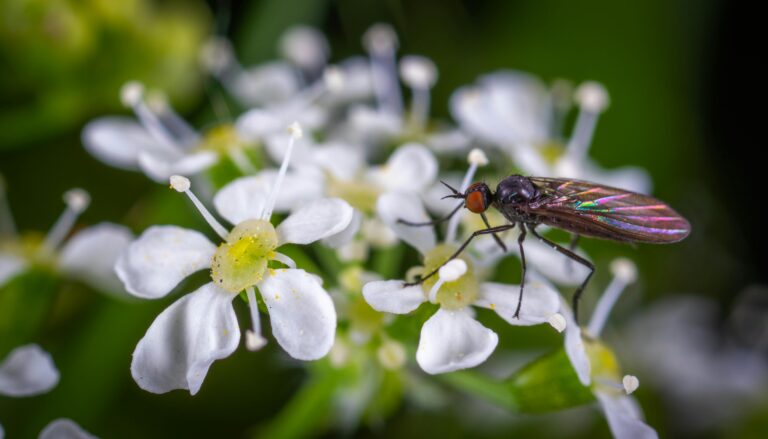Introduction to Senecio Articulatus
Dive into the world of Senecio articulatus, where we explore its native habitat, unique morphology, and reasons behind its growing popularity among succulent enthusiasts. Often nicknamed the “Candle Plant” or “Sausage Plant,” this succulent stands out in the plant kingdom with its segmented, sausage-like stems. Native to the arid landscapes of South Africa, Senecio articulatus has adapted to thrive in environments where resources like water and nutrients are scarce.
Imagine meandering through the dry, rocky soils under the blazing South African sun, when suddenly you stumble upon a cluster of these eye-catching succulents. Their fleshy, cylindrical stems seem to dance in the heat, inviting you to take a closer look. Beyond their distinctive appearance, these plants are survival artists, capable of storing water to outlast the tough drought conditions of their homeland.
The plant’s unique traits don’t end with its stems. Senecio articulatus also sports compact, vibrant green leaves that sprout in fascinating patterns along its lengths. They serve as verdant crowns that not only offer shade to the stems below but also an extra touch of charm to the plant’s profile. It’s no surprise that these features have caught the eye of succulent lovers worldwide, promoting Senecio articulatus’s rise to botanical stardom.
Gardening novices and experts alike marvel at the plant’s low-maintenance requirements and its sculptural beauty that makes a bold statement in any collection. Whether perched on a sunny windowsill or nestled in a rock garden, Senecio articulatus is sure to turn heads and spark conversations. It’s a living sculpture that exemplifies nature’s creativity and resilience.
For those seeking to experience this unique charm firsthand, watching a brief video can illuminate the plant’s allure and care needs. Let’s take a visual journey to appreciate the whimsical elegance of Senecio articulatus:
From its peculiar segmented stems to its growing allure among plant aficionados, Senecio articulatus is truly a niche marvel. Delving into its world is not just about appreciating another succulent; it’s about discovering a unique splendor that nature has sculpted over millennia. So, let’s nurture our green thumbs and embark on this succulent journey with an open heart for the unique shapes and textures that Senecio articulatus brings to our lives.
Understanding the Candle Plant
Have you ever seen a plant and thought, “Wow, is that real?” That’s the usual reaction when someone first lays eyes on the Senecio articulatus, affectionately known as the ‘Candle Plant’ or ‘Hot Dog Cactus.’ But why the quirky nicknames, you ask? Well, this succulent’s segmented, tube-like stems bear an uncanny resemblance to a string of candles or, yes, a line-up of garden-grilled hotdogs!
Native to South Africa, the Candle Plant’s distinctive stems have a waxy, bluish-green coating, and their peculiar jointed appearance is quite the sight to behold. In the wild, you might find them pushing through rocky crevices, their plump stems conserving precious water like a desert survivalist’s canteen. Here, nestled between rocks, they’re not simply surviving but thriving, their sausage-like segments reaching up as if to command attention from anyone passing by.
Even more interesting is how Senecio articulatus adapts to its surroundings. The plant’s ability to withstand the harsh, sun-drenched landscapes it calls home makes it a fantastic species for xeriscaping. In fact, if you’re curious about caring for one yourself, check out this guide on how to nurture your very own Candle Plant.
Don’t let their robust and peculiar aesthetics deceive you; these plants can bring a unique charm to any indoor setting, too. Imagine a quiet study, where only the rustle of turning pages breaks the silence, and there, on the bookshelf, adds a touch of whimsy—an inviting cluster of Senecio articulatus standing sentinel among your treasured tomes.
No article on these captivating plants would be complete without a visual, so let’s dive into a detailed look at the Candle Plant’s care with this engaging video:
For those embarking on their succulent cultivation journey, the Ultimate Guide to Succulent Soil might be a handy resource to ensure your Candle Plant not only survives but also thrives. Make sure you check it out for comprehensive advice on creating the perfect growing conditions for all your succulent companions, including our spotlight star, the Senecio articulatus.
It’s more than just its shape that makes the Candle Plant a fascinating specimen to observe and study. From the rough, rocky soils of its native habitat to the well-tended pots of indoor gardeners, Senecio articulatus never fails to spark conversation and inspire a sense of wonder in plant enthusiasts around the globe. Now, it’s your turn to cherish and appreciate the peculiar elegance of these one-of-a-kind succulents.
Optimal Growing Conditions
Embark on a journey with us as we delve into the optimal growing conditions for Senecio articulatus, a succulent that captivates with its unique beauty. Known for its segment-shaped stems and striking appearance, creating the perfect habitat for this living sculpture is simpler than you might think. First, let’s bask in the light of understanding its sun-soaked needs.
Sunlight is the artist carefully sculpting the vitality of Senecio articulatus. Imagine a sun-kissed South African scape; this succulent thrives in bright, indirect light that mimics its native environment. Direct morning sunlight is like a gentle caress that this plant adores, but remember, intense afternoon rays can scorch its fleshy leaves, so a little shade during peak hours will keep it jubilant and healthy.
When it comes to the climate, Senecio articulatus prefers it on the cooler side, much like an early spring morning. While it can endure higher temperatures, this succulent revels when the mercury stays between 50-75°F (10-24°C). Think of those crisp autumn evenings and fresh spring days — this is when Senecio articulatus feels most at home. Sudden chills of frost, however, are a notorious nemesis. Therefore, safeguarding it from frosty assaults is crucial for its survival.
So, what kind of soil bed does Senecio articulatus dream of? Here’s a tip straight from The Spruce: an ideal soil mixture for succulents like our Senecio is one that’s well-draining, emulating the arid terrains of its natural habitat. In other words, you’d want a substrate that’s the botanical equivalent of a comfy, breathable linen suit, perfectly tailored for dry conditions. Think porous with a capital ‘P,’ a mix where water flows with the ease of a rivulet slipping through stones.
Let’s not forget to sprinkle a little visual guidance into the mix; take a peek at the following video which beautifully encapsulates the nuances of succulent care, including those dear to Senecio articulatus:
Now that we’ve explored the fundamental pillars—light, temperature, and soil—for supporting your Senecio articulatus, it’s clear that a little attention to detail goes a long way. Tailor these elements to suit its preferences, and you’ll see your Senecio stretch and flourish, showcasing its splendor for the world to admire.
Mastering Propagation Techniques
Welcome to the exciting world of Senecio articulatus propagation, where your gardening prowess blooms! Picture this: You’ve fallen head over heels for your Senecio articulatus, aptly known as the ‘Candle Plant’ due to its intriguing segmented stems that resemble ornate candlesticks. Now, imagine multiplying this beauty! Let’s dive into the propagation playbook and turn one plant into many!
Getting Started with Cuttings
The charm of propagation lies in its simplicity, and cuttings are your go-to move. Snip a healthy stem, and let’s get it on its path to independence. It’s like watching your favorite series’s spin-off – the same charm with a new twist. Ensure the cut end is calloused over for a day or two to prevent rot, then pop that stem into well-draining soil. Just a heads-up, patience is key! Water sparingly until you notice new growth – that’s your cue that the roots are embracing their new home.
Encouraging Offset Growth
Your plant is not just a pretty face; it’s a procreator, ready to spread its offsets around the base. These little pups are eager to start their own stories. Gently separate them from the mother plant when they’re sizeable enough to handle the transition. Think of it like the first day of school—daunting yet the start of a grand adventure.
Here’s a visual guide to these techniques via a helpful video:
Adventures in Seed Sowing
Last but not least, let’s talk seeds – the confetti of plant propagation. Sowing seeds may feel like you’re rolling the dice, as each seed holds the potential for a brand-new plant with its unique quirks. Sow in a tray with fine, well-drained soil and cover with a sprinkle of sand. Keep them moist and throw a ‘germination party’ – a bit of warmth and you might just see sprouts within a couple of weeks!
Now, armed with these techniques, you’re on your way to becoming a Senecio articulatus propagation expert. For more succulent care tips, check out The Ultimate Guide to Succulent Care, and ride the wave of your newfound green thumb success!
Proper Care Routine
Let’s dive into the world of Senecio articulatus and discover how to nurture this eye-catching succulent to its full beauty! Think of it as creating a tailor-made spa for your plant, a place where every bit of care helps it flourish. Sprinkle in some patience, add a dash of love, and you’ll have a thriving botanical buddy in no time!
Now, let’s talk hydration. Your Senecio articulatus isn’t a big drinker. It prefers a sip here and there rather than a drenching. Picture those chubby, sausage-like segments—they store water, making them quite the drought-hardy troopers. Imagine you’re mixing the perfect drink; the key is getting that watering schedule just right. So, when the topsoil feels dry to the touch, that’s your cue—a gentle soak is all it needs. Too much water? No, thank you! That’s the fast track to root rot, and trust me, your plant isn’t looking to dive into a swimming pool.
Grooming and pruning are like a regular trim at the barbershop; it keeps things looking neat and tidy. Snipping away any dried or withered leaves not only keeps your Senecio articulatus looking sharp but also encourages growth. What’s better than a well-manicured succulent showing off its form? And speaking of a well-manicured look, have you considered companion planting? Click here to explore how companion plants can enhance the aesthetics and health of your succulent garden!
And, because seeing is believing, check out this video to visualize the care tips we’re talking about.
Lights, camera, action! Senecio articulatus loves the spotlight, but not too intensely. We’re aiming for that soft, diffused glow rather than a summer blockbuster premiere. Locate your succulent where bright, indirect light filters through, imitating the dappled shade of its natural habitat. It’s like giving your plant VIP seats at a daytime outdoor concert—premium view without the harsh sunburn.
So, that’s your essential care kit: water wisely, prune with purpose, and let it bask in the perfect light. Keep up with this routine, and you’ll see your Senecio articulatus glow with gratitude, showing off its unique charm like the star it is!
Pest Management and Disease Prevention
As custodians of the enchanting Senecio articulatus, it behooves us to form a shield against the marauding pests and covert diseases that lurk in the corners, ever-prepared to launch an assault on our verdant friends. Picture this: your flourishing Senecio articulatus, with its plump, segmented stems and striking leaves, suddenly besieged by an army of aphids, cunningly sipping away at its very life force. It’s not just a figment of imagination; this is the frontline of our botanical battleground.

But fret not! Being proactive with our plant’s health is akin to arming it with an invisible armor. It starts with eternal vigilance; inspect your Senecio articulatus regularly for any signs of trouble. Leaf discoloration, stunted growth, or an unscheduled leaf-drop are telltale signs of distress—and where there’s smoke, there could very well be fire.
Should you spot the telltale webbing of spider mites or catch the iridescent shimmer of a thrip’s wing, swift action is paramount. The humble insecticidal soap becomes our elixir of life, banishing these critters with a gentle, yet robust touch. And for those foes too minute or wily, like the infuriating root aphids, a systemic insecticide may be considered the cavalry arriving just in time to turn the tide in our favor.
While insects plot their next move, microbes and fungi are no less devious. The silver lining, however, is in our regimen of prevention. Overwatering is the opening these pathogens crave, leading to root rot or a blight that creeps insidiously through the stems. To outmaneuver them, ensure your Senecio articulatus is potted in well-draining soil, getting just a drink when thirsty, not a deluge. Should a fungal fiend manage to establish a foothold, a fungicide might be the beacon of hope, breaking the siege and restoring your plant to its former glory.
Remember, the best offense is a good defense when it comes to pest management and disease prevention. Keep your Senecio articulatus healthy, monitor it closely, and be ready to act at a moment’s notice. Through these measures, your succulent beauty will continue to thrive, unfettered by the specter of infestation and disease, standing as a testament to the resilience embedded in its every leaf. This is not just plant care; it’s a display of our dedication to the art of horticulture.
Design Ideas with Senecio Articulatus
Embrace the unique appeal of Senecio articulatus by incorporating this sculptural succulent into your living space. With its eye-catching segmented stems and lush foliage, this plant brings a touch of nature’s artwork to any setting. Whether you’re a seasoned gardener or just starting to explore the plant world, Senecio articulatus offers versatility and character that can enhance your environment.
Imagine this cylindrical beauty nestled in a sleek, modern planter on your office desk, quietly asserting its presence without demanding attention. Its distinctive form pairs exceptionally well with minimalist aesthetics, lending an organic contrast to straight-edged décor. But that’s just the start—let’s explore the wide range of design possibilities with this captivating succulent!
Highlighting Indoor Elegance
Indoor spaces often benefit from the serene and purifying presence of greenery. Senecio articulatus thrives in well-lit rooms and can become a focal point when placed in a terracotta pot atop a stack of books on your coffee table. Watch the shadows play along its joints as the day shifts, giving your room an ever-changing piece of natural art. If you’re inclined towards a bohemian vibe, consider hanging macramé plant holders by the window, with the articulated stems cascading down like a living chandelier.
For those who appreciate the subtler things, create a zen corner in your home. A low wooden shelf with a collection of different succulents, including Senecio articulatus, paired with sand-colored stones, can create a calming miniature landscape. This setup not only beautifies your space but also offers a tranquil retreat from the hustle and bustle of daily life.
Beautifying Outdoor Spaces
Outdoor gardens and patios also present a wealth of opportunities for showcasing Senecio articulatus. In a rock garden, its segmented stems contrast remarkably with the surrounding stones and other succulents—imagine a carpet of blue-green sedum with the occasional upright ‘candlestick’ of Senecio articulatus punctuating the space.
If you’re a fan of container gardening, group several Senecio articulatus plants of varying heights in a large, shallow planter to mimic a small forest of green sculptures. This living tableau can serve as a captivating centerpiece for an outdoor dining area, especially when the evening light filters through its leaves, creating a dance of light and shadow that elevates your al-fresco experience.

Wherever you choose to display Senecio articulatus, remember that it’s not just a plant—it’s a statement piece that celebrates the melding of nature and design. By experimenting with different placements and pairings, you can unlock its full potential and watch as it transforms the energy and aesthetic of your space.
Q&A on Cultivating Senecio Articulatus
Welcome, green thumbs and plant enthusiasts! You’ve entered the delightful world of Senecio articulatus, a succulent that stands out with its segmented stems and lush, handcrafted look. Ready to give your green sanctuary a touch of its unique charm? Let’s unravel the mysteries of successfully nurturing this botanical marvel.
How Do I Start Growing Senecio Articulatus?
Imagine you’re piecing together a living jigsaw puzzle. That’s how you start with Senecio articulatus. Propagation is a snap—literally! Just take a healthy cutting, let the end callous over for a day or two to prevent rot, and then nestle it in well-draining soil. With patience and a sprinkle of care, you’ll watch it grow roots and reach for the sky.
What’s the Perfect Spot for My Plant?
Picture this: a basking lizard on a sun-soaked rock. That’s your Senecio articulatus in its ideal setting—drenched in bright, indirect sunlight. A window ledge with morning or late afternoon sun invites a vibrant display of growth. Avoid the harsh midday sun though; just like us, these succulents enjoy a bit of shade during the hottest hours.
How Often Should I Water This Succulent?
Here’s a fact that’s refreshing: Senecio articulatus despises wet feet. Think of it as a camel of the plant world, storing water in its stems. Water deeply but infrequently, allowing the soil to dry out between watering sessions. A thirsty plant is better than a waterlogged one—drowning is a real concern for these drought-loving darlings.
Any Tips on Fertilizing?
If you fancy yourself a plant chef, the recipe for feeding your Senecio articulatus is simple. Once in a while, treat it to a diluted, balanced fertilizer during the growing season. The secret ingredient? Restraint. Avoid overfeeding, as too much of a good thing can lead to leggy growth and weaken its stunning silhouette.
Now it’s time to see this all in action! Here’s a hands-on guide that will walk you through caring for your Senecio articulatus, ensuring it thrives in your plant collection.
Armed with these insights, you’re well on your way to forging a deep-rooted bond with your Senecio articulatus. Lean into the learning curve, and remember, each plant has its personality—enjoy the dance of adapting and evolving your care techniques. Now, roll up your sleeves and let the plant-pampering begin!
Frequently Asked Questions
Stepping into the world of succulents, the Senecio articulatus, or the Candle Plant, sparks a particular interest among green-thumbed enthusiasts. Its cylindrical, jointed stems and lush appearance command attention, but how does one ensure this botanical gem thrives? Let’s shed light on some of the most burning questions surrounding its care.
Can Senecio articulatus survive in low light?
Like a troupe of acrobats adapting to the spotlight, Senecio articulatus displays a remarkable resilience. Although it revels in bright, indirect sunlight, it’s known to tolerate lower light levels. Imagine a cozy corner of your living room, where the light seems to hesitate – yes, even there, your Candle Plant may pull through. But beware, for low light can lead to etiolation – those once stout stems stretching thin in search of the sun.
How often should I water my Candle Plant?
Envision watering as a special performance; not too frequent, yet never forgotten. The Candle Plant’s watering needs can be likened to a desert downpour – infrequent but profound. Allow the soil to dry out completely between watering sessions to mimic the natural arid conditions it adores. Overwatering? That’s a no-go, it will cause your plant’s roots to frown and drown.
What is the best way to encourage blooming in Senecio articulatus?
A floral encore is the dream of every plant parent. To coax blooms from your Senecio articulatus, mimic its native habitat – bright light, well-draining soil, and a drop in nighttime temperature. Picture an early spring dawn, as the sun’s rays gently warm the cool earth; that’s the scene for a blooming spectacle worthy of applause.
Is Senecio articulatus toxic to pets?
A word of caution to the pet lovers sharing their stage with these succulent performers: Senecio articulatus contains pyrrolizidine alkaloids, which are indeed toxic to pets. It’s best to keep this show well out of paws’ reach, lessening the chance of an unplanned veterinary visit interrupting your harmonious household.
How can I tell if my Senecio is overwatered?
The signs of an overwatered Senecio are like unwanted critics at a show – they tell you something is off. Swollen, discolored leaves, stems that feel squishy to the touch, and a general look of despair are tell-tale symptoms. A healthy Senecio is robust, with firm stems – anything less, and it’s time to reassess your watering strategy.
Can Senecio articulatus grow outdoors in winter?
Consider winter in the garden like an intermission – a pause before the next act. In zones where frost is a no-show, your Candle Plant can indeed grace the outdoor stage year-round. However, in cooler climates, it’s like casting a tropical dancer in a winter ballet – out of place and unlikely to thrive. So, unless you live where winters are mild, keep your Candle Plant indoors when Jack Frost arrives.
For a more visual guide on nurturing your Senecio articulatus, swing by this helpful video:



